Why People Travel Miles for This Massive Paratha in Pakistan
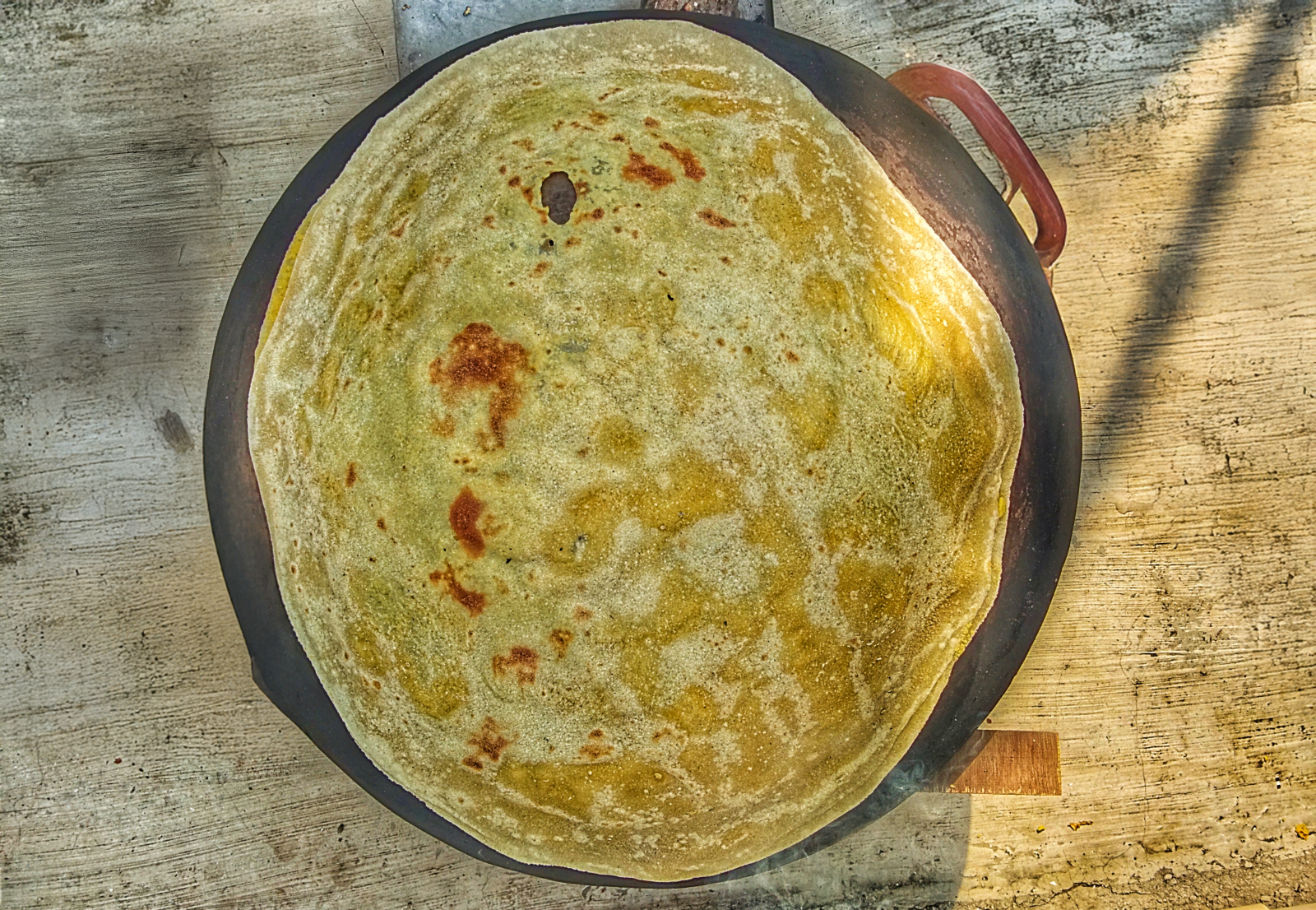
|
Getting your Trinity Audio player ready... |
As dawn breaks and the cool morning breeze flows through the streets, travelers and food enthusiasts embark on a journey toward a unique culinary landmark along the N-5 national highway from Bahawalpur, the city of Nawabs, toward Multan. As we cross the River Sutlej, a striking sight grabs your attention as you enter the town of Lodhran: ‘Mushtarka Balochistan.’ This isn’t just any roadside eatery. Mushtarka Balochistan is an expansive restaurant that has carved out a reputation for one particularly unforgettable reason—its legendary, massive paratha.
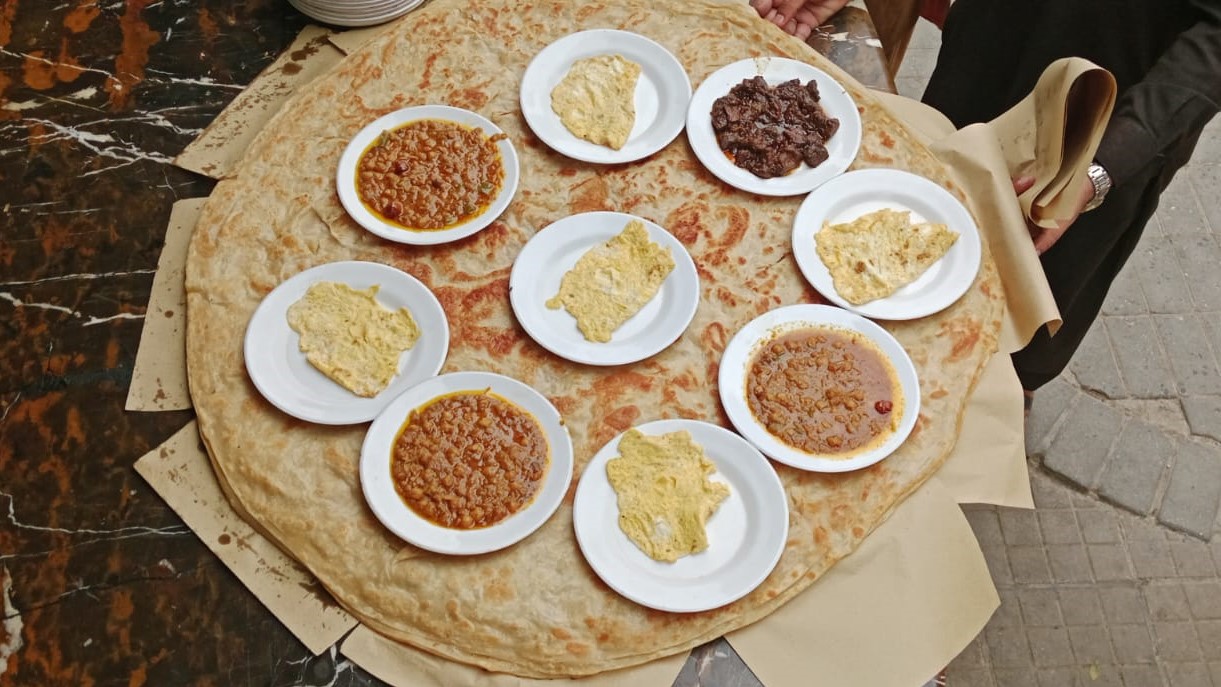
Have you ever heard of the giant Paratha in Pakistan? If not, prepare to be amazed! We’re talking about a jaw-dropping, 5-foot-wide delicacy, which is breaking records and winning hearts. This dish is not just enormous, it is also delicious! The Paratha perfectly crispy and irresistibly delicious, so much so that people come from far and wide to experience it. One bite, and they’re hooked, returning time and again to experience this epic culinary creation.
The Massive Paratha
The paratha is prepared on a giant griddle by the restaurant’s master chef, Badam Gul, whose innovative skills have earned him a near-legendary status. Gul explains that he has been making this massive entree for over two decades. As the old saying goes “practice makes perfect!”
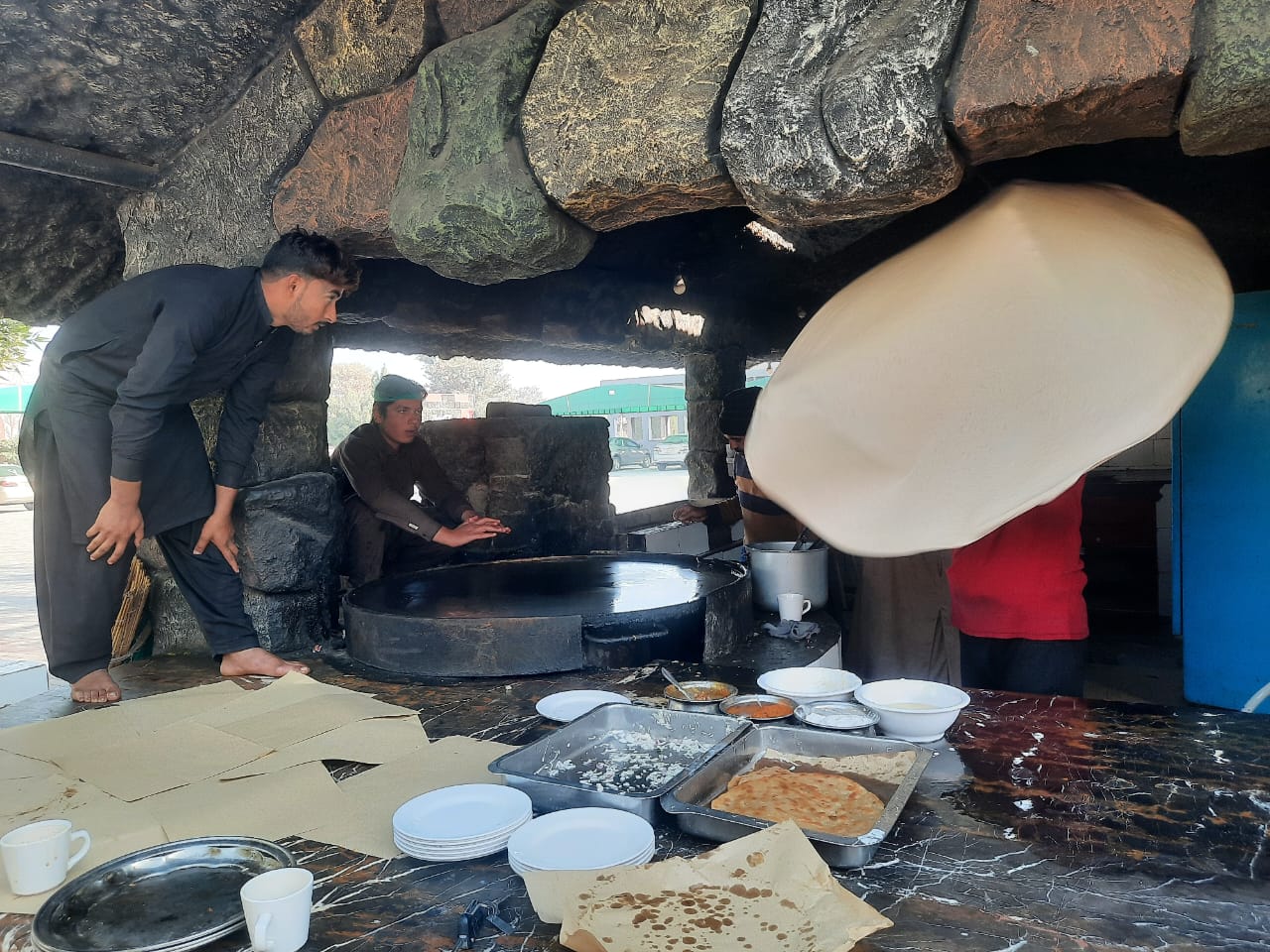
“It all began with a simple one-layer paratha,” explains Feroze Khan, the proud owner of Mushtarka Balochistan, recalling with a smile. Eventually, this humble dish grew into a double-layered paratha, and customer interest grew along with it. “People loved it so much that we started experimenting. Over the years, we went from 1 to 20 layers, each bigger and better. Now, we offer parathas in sizes ranging from 3 to 20 layers to meet the demand.”
Today, this tremendous Paratha has become the signature dish and the restaurant’s main attraction. People are drawn to its unusual size, savory flavor, and pleasantly crispy texture. Many take pictures and videos of it before diving in, which then of course go straight to their friends on social media, generating even more interest.
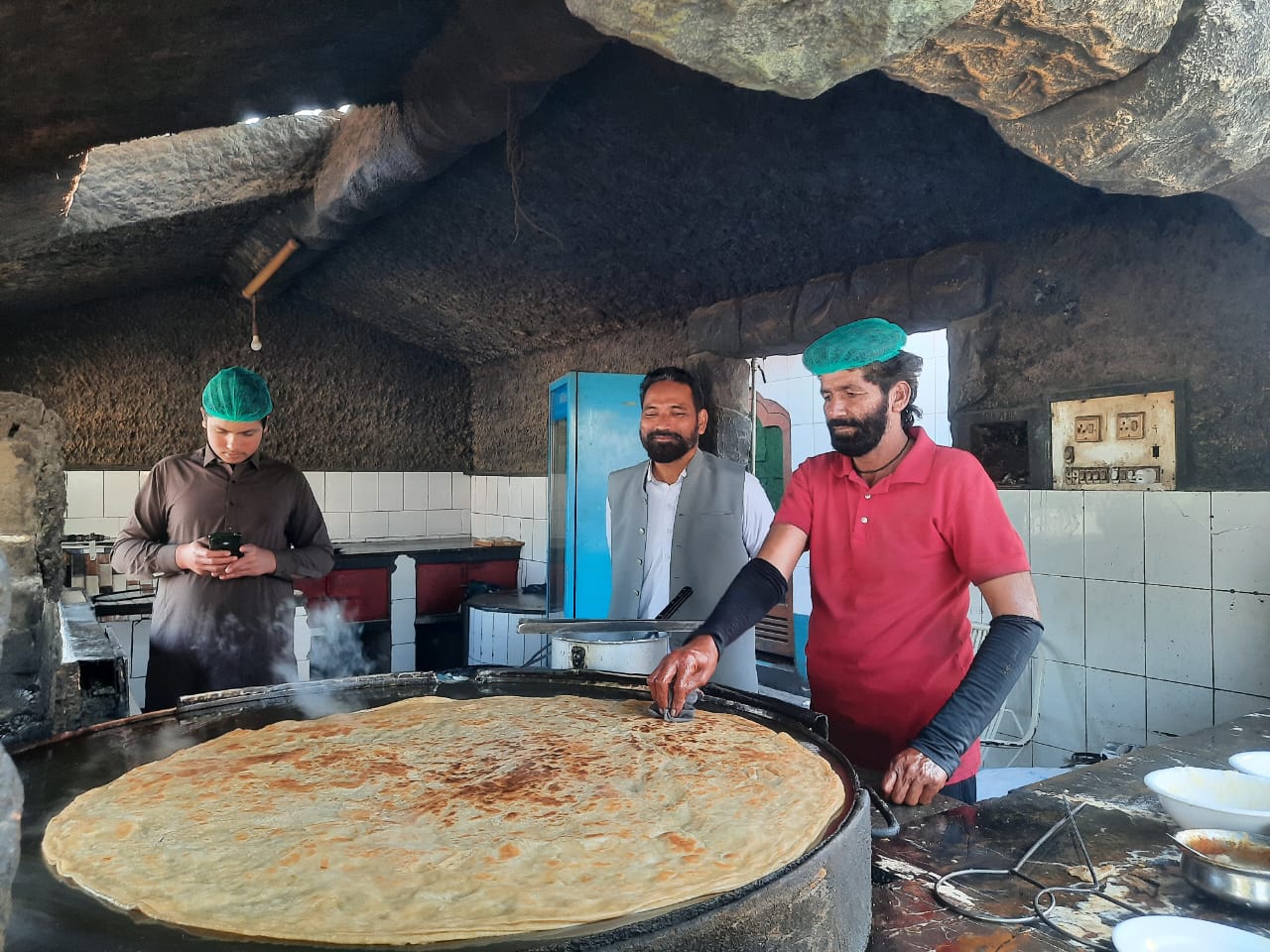
The Breakfast
The preparation for the breakfast crowd start at 5 a.m. and continue until 11 a.m. Many customers travel great distances with families and friends to start the day with this giant paratha, and they cannot be disappointed. This paratha is available in multiple sizes, maxing out with a 20-layer serving size that can comfortably feed a party of 12-15.
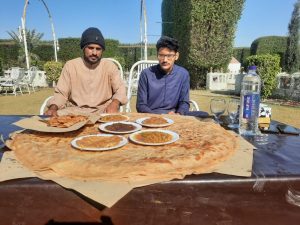
As much of a draw as the Paratha is, though, the allure of Mushtarka Balochistan doesn’t end with a single entree. A glance at the menu reveals that this roadside eatery is a true gateway to Balochi cuisine. Beyond the crispy layers of its signature bread, the restaurant pays homage to the province’s rich culinary heritage with dishes that have been perfected over generations. Among them, two stand out as must-try specialties: the smoky, slow-roasted Balochi Sajji and the deeply satisfying Namkeen Rosh. These dishes carry the soul of Balochistan, offering a taste of tradition in every bite.
Balochi Sajji and Namkeen Rosh
Balochistan, with its vast landscapes and deep-rooted traditions, is not only a cultural treasure but also a haven for distinctive culinary experiences. The province is home to some of Pakistan’s most unique and flavorful dishes, known for their simplicity, bold flavors, and time-honored cooking techniques. One place that proudly upholds this rich gastronomic heritage is Mushtarka Balochistan, where every dish tells a story of tradition, patience, and craftsmanship.
During our visit, the restaurant’s owner passionately shared insights into their signature dish, Balochi Sajji, a slow-roasted delicacy synonymous with hospitality and celebration in Balochistan. Alongside it, another standout dish captures the essence of traditional cooking—Namkeen Rosh, a mutton roast prepared with minimal seasoning to preserve the natural flavors of the meat. Both dishes are deeply intertwined with Balochi culture, where communal dining and generous servings are a testament to the region’s warm and welcoming spirit.
The Legacy of Balochi Sajji
More than just a dish, Balochi Sajji is a cultural icon, a staple at grand gatherings, festivals, and weddings across the region. Its preparation is a test of patience and skill, relying on age-old techniques passed down through generations. Traditionally, a whole lamb or chicken is marinated in a simple yet aromatic blend of spices, then skewered on long metal rods and slow-roasted over an open fire. This slow-cooking method allows the meat to retain its juiciness while developing a smoky, slightly charred exterior—its signature flavor.
Unlike heavily spiced dishes found in other parts of Pakistan, Sajji is a celebration of minimalism. The seasoning—often just salt, black pepper, and a touch of lemon—enhances the natural richness of the meat rather than overpowering it. The result is a dish that is both rustic and refined, deeply satisfying yet uncomplicated.
The traditional serving style also sets Sajji apart. Instead of elaborate side dishes, it is typically enjoyed with Balochi roti, naan, or saffron-infused rice, allowing the flavors of the slow-roasted meat to take center stage. A side of raita or chutney provides a cooling contrast, balancing the dish’s smoky depth with a refreshing touch.
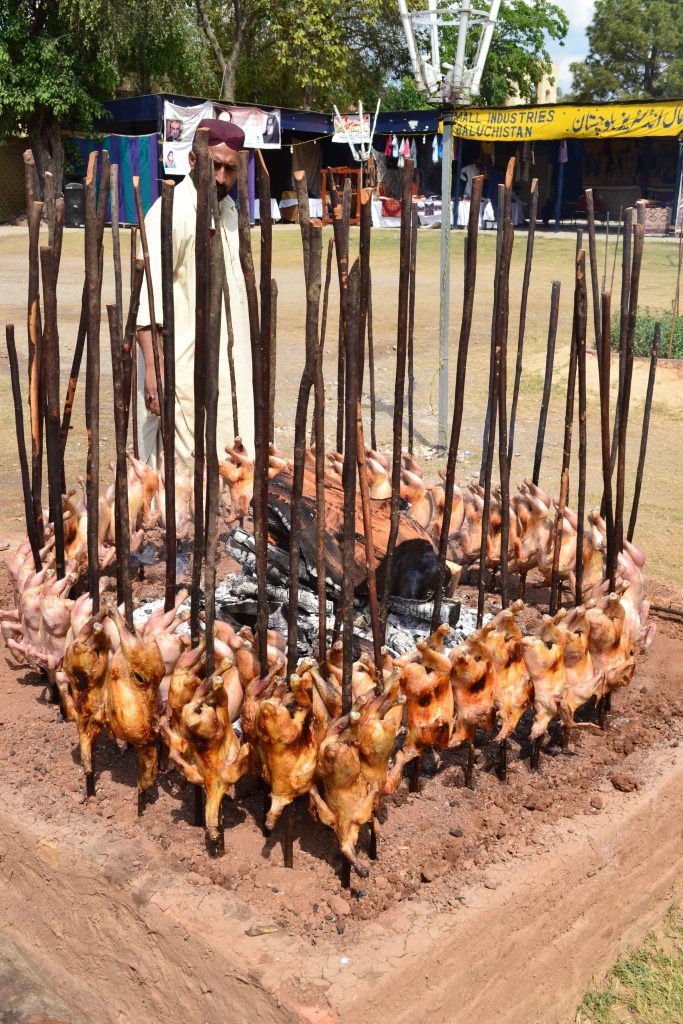
Recipe for Authentic Balochi Sajji
If there’s one dish that perfectly embodies the rugged charm of Balochistan, it’s Sajji. Simple yet packed with flavor, this slow-roasted masterpiece proves that sometimes, less really is more. No complicated marinades, no long list of spices—just good meat, patience, and fire. Imagine a whole lamb (or chicken, if you’re feeling modest) gently turning over open flames, soaking in the smoky goodness until it reaches peak tenderness. It’s the kind of dish that makes you forget about cutlery—because, let’s be honest, the best way to eat Sajji is with your hands. Ready to bring a taste of Balochistan to your table? Let’s get started.
Ingredients:
- 1 whole lamb (or whole chicken for a smaller portion)
- 3 tbsp salt (to taste)
- 2 tbsp black pepper (freshly ground)
- 2 tbsp lemon juice
- 2 tbsp vinegar
- 1 tbsp crushed coriander seeds
- 1 tbsp crushed cumin seeds
- 4 tbsp cooking oil or butter
- 2 tbsp yogurt (optional for added tenderness)
- Skewers or metal rods
Preparation Method:
- Marination: Wash the meat thoroughly and pat it dry. Mix salt, black pepper, lemon juice, vinegar, coriander, cumin, and oil in a bowl. Rub this mixture generously over the meat. Let it marinate for 4–6 hours (overnight for the best flavor).
- Cooking Process: Traditionally, Sajji is cooked over an open fire or charcoal grill. Skewer the marinated meat onto a long metal rod and place it near low-heat charcoal flames. Rotate occasionally for even cooking.
- Roasting Time: Depending on the size of the meat, it may take 3–4 hours to cook properly. The meat should be tender and slightly crispy on the outside.
- Serving: Serve hot with traditional Balochi roti, naan, or saffron rice. A side of chutney or raita enhances the taste.
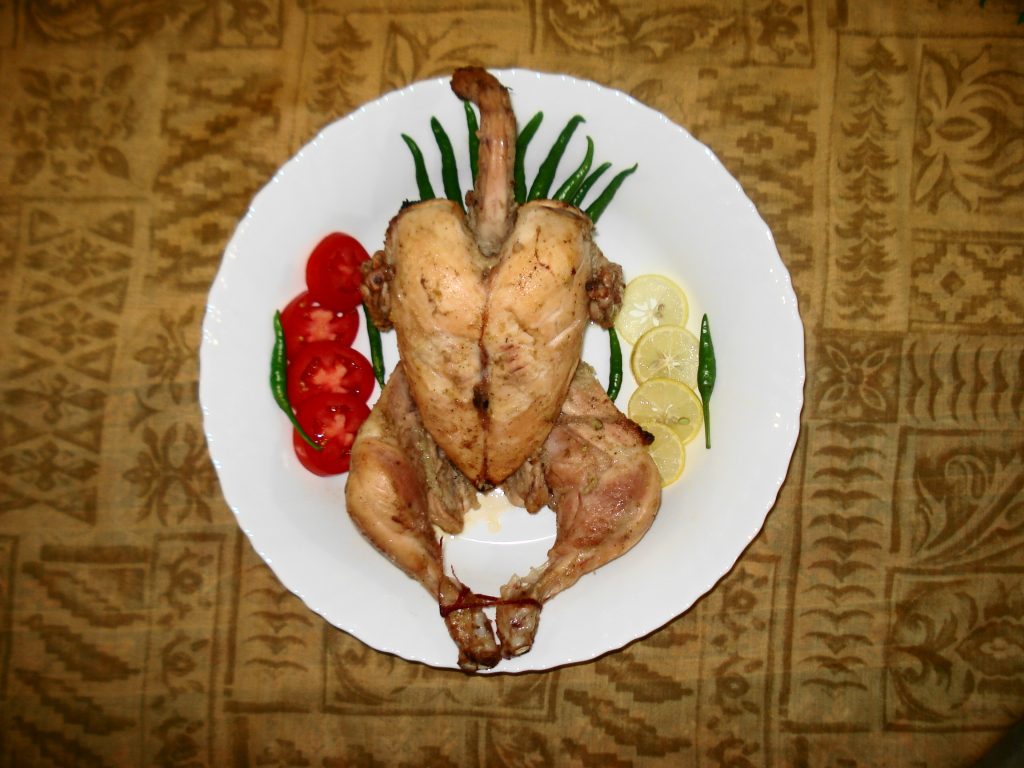
Namkin Rosh – The Flavorful Mutton Roast
Another famous dish from Mushtarka Balochistan is Namkin Rosh, a slow-cooked mutton dish with minimal spices. This dish preserves the meat’s natural taste, making it a favorite among foodies and culinary enthusiasts.
Recipe for Traditional Namkin Rosh
Ingredients:
- 1 kg mutton (with bones)
- 1 tbsp rock salt (to taste)
- 1 tbsp black pepper
- 2 tbsp ginger-garlic paste
- 4–5 green chilies (whole)
- 2 onions (chopped, optional)
- 3 cups water
- 2 tbsp butter or ghee
- Fresh coriander and lemon slices (for garnish)
Preparation Method:
- Boiling the Meat: In a deep pot, add mutton, water, salt, black pepper, and ginger-garlic paste. Cover and cook on low heat for 2–3 hours until the meat is tender and releases its juices.
- Adding Flavor: Once the meat is soft, add green chilies and onions. Continue cooking for another 20 minutes until the broth is slightly reduced.
- Final Touch: Add butter or ghee for extra richness. Stir well and let it rest for 5 minutes.
- Serving: Serve hot with naan or boiled rice. For a refreshing touch, garnish with fresh coriander and lemon slices.
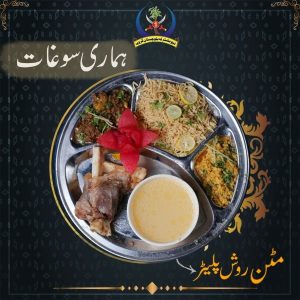
The smoky aroma and tender texture of Sajji make it a favorite among locals and visitors alike. At Mushtarka Balochistan, their Sajji is celebrated as a masterpiece of culinary tradition, blending simple ingredients with expert techniques to create an unforgettable dish.
Both Namkin Rosh and Sajji reflect the essence of Balochistan’s rich culinary heritage. Their preparation at Mushtarka Balochistan follows time-honored recipes that deliver flavors rooted in culture and tradition, making this restaurant a must-visit for food lovers.












